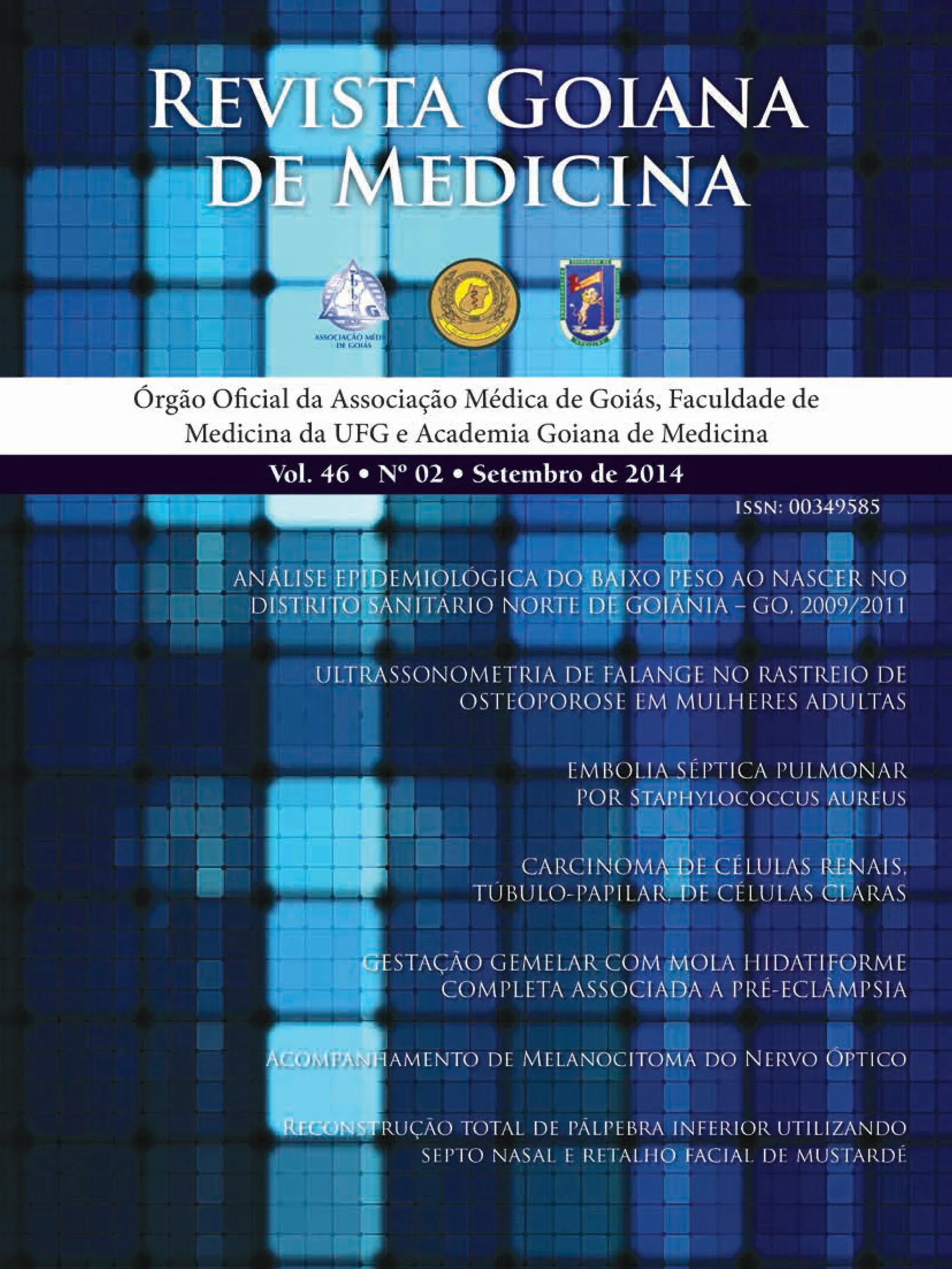Epidemiological analysis of low birth weight in north sanitary district of Goiânia – GO, Brazil, 2009/2011
Keywords:
Birth Certificates, Cross-Sectional Study, Epidemiology, Low Birth Weight, North Sanitary District of Goiânia – GOAbstract
Objective: To analize the prevalence of low birth weight according maternal age, gestational age, number of prenatal visits and other variables met in the Declarations of Birth Health North Sanitary District of Goiania – GO in the period from 2009 to 2011.
Methodology: Two groups were divided with the data provided by SINASC, those with normal weight (>2,500g) and low birth weight (1,000g≤LBW<2,500g), weights lower than 1.000g were not considered. Appropriated statistics were used to verify the significance of that variable for LBW children in North SD.
Results: The population of North SD recorded during 2009 to 2011, the amount of 2,844, 2,869 and 2,213 neonates, with 192, 208 and 162 (6,75%, 7.25% and 7.32% of the district neonates), respectively, presented LBW. The variables were grouped into 3 groups, which clearly does not influence the BPN (p-value high) as type of delivery, race/color, maternal occupation, marital status and presence of anomalies; those in similar studies showed influence LBW but the p-value was not statistically significant in this study, which were maternal age, Apgar1, number of living children, number of children dead, type of pregnancy and schooling, and the really significant are the infant’s sex born, number of prenatal visits, length of gestation and Apgar5.
Conclusion: Must be better researched the slight increase of LBW in the North SD. Above all, we point the importance of maternal education and conducting prenatal, that with few visits, 1-3, showed a highly significant difference, compared with its absence (p = 0.0053).


